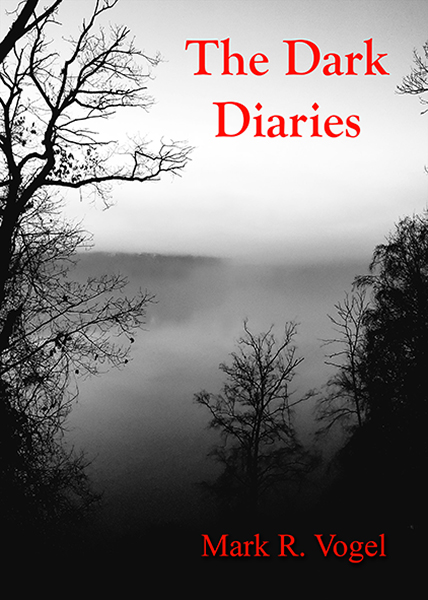More about a werewolf than the results of a mad scientist’s megalomania (hence, the title should have been “The Wolf Man Meets Frankenstein’s Monster” but, granted, the former–obviously–doesn’t have the audience pull to merit top billing), Roy William Neill’s Frankenstein Meets the Wolf Man is the first Universal “Monster Mash” hybrid involving two of the studio’s biggest money makers. Curt Siodmak, screenwriter of the very literate script to George Waggner’s The Wolf Man and most of the Universal follow-ups to their monster hits, seems not to know what to do with the convoluted history of Frankenstein’s creation as he presents only the second screen appearance of the Wolf Man. In the wake of the fact that Lon Chaney decided to act, Lugosi negates the lycanthrope’s empathy-inducing role as Siodmak, after being unable to aptly explain the impetus for the monsters’ resurrections, inserts a musical ditty, thus admitting his culpability of having wasted his audience’s time.
When two grave robbers (Cyril Delevanti and Tom Stevenson) inadvertently awaken Lawrence Talbot (Lon Chaney Jr.) by opening his tomb during a full moon, the Wolf Man reemerges. After his initial night of killing, Talbot realizes he is eternal yet seeks to find a way to end his misery. His search concludes with the discovery that a man by the name of Frankenstein might be able to help yet, when it is revealed that the doctor is dead, he relies upon the deceased’s daughter, Elsa (Ilona Massey), and Doctor Frank Mannering (Patric Knowles). In the meantime, another full moon occurs and the Wolf Man accidentally locates the frozen body of Frankenstein’s Monster (Bela Lugosi), unleashing the infamous menace upon society as the creature begins to plague the streets of Vasaria. After reviewing Frankenstein’s notes, Mannering hypothesizes that reversing the polaric energy of the Monster will bring his downfall and proposes that perhaps the same solution may apply to Talbot. Yet, before the doctor can complete his experiment, curiosity gets the better of him and he increases the monsters’ energies, unleashing duel mayhem as both the Wolf Man and the Monster emerge simultaneously empowered.
Chaney, the only actor to consistently play his respective monster throughout its history, opens the film to eyebrow-raising effect: He actually performs, unlike in his previous appearance as the Wolf Man in George Waggner’s original by the same name and as Frankenstein’s creature in Erle Kenton’s The Ghost of Frankenstein. Regrettably, his decision to do his job is ill-timed in that he does so in a throwaway picture with little to no redeeming value as he provokes audience sympathy from the beginning to the end of the feature, his bowline remaining in an upturned “V” after being unable to convince Mannering or Inspector Owen (Dennis Hoey) that he is the killer at large; discovering that his only hope of ending his damnable plight, Ludwig Frankenstein, has passed away; all before spending the remainder of the film existentially longing for his own demise.
Unfortunately, for everything Chaney brings to his role, Lugosi counteracts as he follows the cue of Chaney himself in his piss-poor depiction of the Monster in previous installment in the monster’s legacy. Many sources have it, including Chaney late in his career, that the Hungarian actor had to be doubled through so much of the feature that issuing him credit for the role was a gracious act in and of itself.
Siodmak’s script establishes the stereotype that monster crossovers result in cinematic tripe as the screenwriter never successfully progresses past the initial stage of validating the monsters’ revitalizations. For instance, though it is later revealed that the werewolf is eternal, this negates the mythos that the monster can be destroyed via the use of silver, as we saw not only with Talbot at the hands of his father in the original, but of the character of Bela, who infects Larry prior to the gypsy’s demise in the same manner. Though we are merely presented with the image of Frankenstein’s creation imbedded in a block of ice, this counters the avid filmgoer’s memory in that the monster, for the second time, succumbs to fire at the finale of Kenton’s previous chapter in the series. Yet the Monster is riddled not only with metaphysical conundrums, but its characterization is inconsistent. The creature appears at times to be blind, which would be concurrent with the climax of The Ghost of Frankenstein, yet at other periods during the film he seems excessively well oriented for being visually impaired. Yet again, some justify this narrative ambiguity via the excessive amounts of cuts made by the studio, citing that in one segment that met the cutting room floor, Mannering cured the Monster’s ailment. However, if this is so, there exists other contradictory qualities in the monster: If the character is were to be consistent with his own history, he should be vocal with none other than, natch, Lugosi’s voice. But, once again, the Monster is deprived of the ability to speak yet we see him silently utter two lines during the production atop the fact that if the Monster is still housing Ygor’s brain from said feature, he seems excessively sedate for a carcass hosting a lunatic’s mind.
Of course, all of this seems part and parcel considering that Mannering, seven-eights of the way through the film, is benevolent until, knick-knick, he snaps without any apparent justifiable cause or reason outside of merely permitting the monsters to clash. Yet, this is a minor qualm compared to Siodmak’s potpourri decision to include a festival singer (Adia Kuznetzoff) in order to allow the horror audience a reprieve from the murder and mayhem as we merrily croon along before returning to the carnage.
Yet, I cannot help but pause to note that one of the most inadvertently funny moments in the Universal Monster Series occurs when Mannering, diagnosing Frankenstein’s creation in order to assess whether or not he might be able to cure the monster, fiddles with the big guy’s knobs for a fleeting, evaluative second.
Roy William Neill’s Frankenstein Meets the Wolf Man is a piece of schlock horror which gratuitously exploits the creatures it casts without ever attempting to do more than make money, thus setting the bar to a record limbo-height for such productions in the genre which, to date, seems to be reverently honored. Yes, the film was produced during the war but can we posit the possibility that the two monsters metaphorically depict, say, Roosevelt and Churchill’s unspoken rivalry? Nope. Even the Allies verses the Axis Powers? Yeah, right. What’s more, the film sadly announces that the figure of the Wolf Man, unlike his other Monster peers, was unable to retain audience attention for more than one picture without the aide of issuing top billing to another creature in the studio’s canon (atop the fact that the series was the second shortest in the Universal collection, The Creature from the Black Lagoon being the only monster to bow out in a shorter time span). Paradoxically, the film does nothing to develop or contribute to either character’s legacies aside from positing that the Wolf Man is eternal (which most audiences assumed by this time due to such antagonists popping up in a film every couple of years or so) yet Chaney nonetheless issues one of his most convincing performances of his career yet all to nil due to having chose to do so with a useless script as he sadistically saves the production from being an instrument of torture during interrogation proceedings.
Trivia tidbit: Chaney was originally slated to play both creatures but the producers cited time constraints and “wisely” cast Lugosi opposite.
-Egregious Gurnow
- Interview with J.R. Bookwalter - January 22, 2015
- Interview with Andrew J. Rausch - January 22, 2015
- Interview with Rick Popko and Dan West - January 22, 2015
- Interview with Director Stevan Mena (Malevolence) - January 22, 2015
- Interview with Screenwriter Jeffery Reddick (Day of the Dead 2007) - January 22, 2015
- Teleconference interview with Mick Garris (Masters of Horror) - January 22, 2015
- A Day at the Morgue with Corri English (Unrest) - January 22, 2015
- Interview with Writer/Director Nacho Cerda (The Abandoned, Aftermath) - January 22, 2015
- Interview with Actress Thora Birch (Dark Corners, The Hole, American Beauty) - January 22, 2015
- Interview with Actor Jason Behr, Plus Skinwalkers Press Coverage - January 22, 2015


